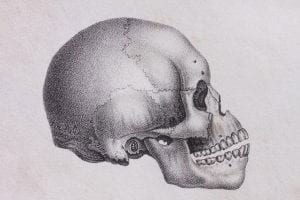In the span of five years, 3-D printing has taken off. What was once a hopeful idea for the future is now a common amenity in universities, a toy for artistic children, and apparently, a tool for doctors.
The use of 3-D printing in the medical field is still an up and coming idea. Dr. Michael Jaskolka is an early adopter of using this 3-D printing technology in the medical field, specifically for his craniofacial patients, such as those with craniosynostosis.
July is National Cleft and Craniofacial Awareness and Prevention Month, and Dr. Jaskolka’s team has enrolled 100 patients at the New Hanover Regional Medical Center for treatment that makes use of 3-D printing.
After Dr. Jaskolka creates an image based on a patient’s CT scan, he sends the information to the 3-D printer that’s tucked away in the corner of his often.
Within half a day later, an extremely lifelike recreation (made of plastic, not bone) emerges from the printer.
This recreation is then used to help map out surgical procedures and even to explain those steps to patients, while a model of their own head is in their hands.

This breakthrough in technology is attributed to the recent relative affordability of the printers. The CubePro Duo printer that he uses retails for about $4,000, but it greatly improves accuracy, predictability, and speed of craniofacial surgeries.
Dr. Jaskolka jokes,
“I’ve gotten pretty good making skulls and mandibles […] nobody’s doing it more cutting edge than this.”
Part of the beauty behind 3-D printing is the versatility behind it, and with technology improving at the rapid speed that it is, who knows what the latest printing and scanning systems will evolve into, much less what they will bring to craniofacial patients and the rest of the medical community.
Dr. Jaskolka echoes this and describes,
“It’s a great educational tool for patients. It’s a great training tool for medical students. It’s really whatever I decide to make of it.”
To learn more about Dr. Jaskolka’s work and 3-D printing in the medical industry in Star News, click here!
What do you think of this latest technology? Share your thoughts and concerns with the Patient Worthy community!


